L R AS Published on Monday 27 April 2020 - n° 319 - Categories:Thread of the Week
Le Fil de la Semaine n°319 of April 27th
THIS WEEK'S NEWS HIGHLIGHTS
If there were only five texts to read this week :
FRANCE
 * Two decrees published: on the EPP and on the SNBC
* Two decrees published: on the EPP and on the SNBC
 * Towards a revision of the French energy system?
* Towards a revision of the French energy system?
THE FILE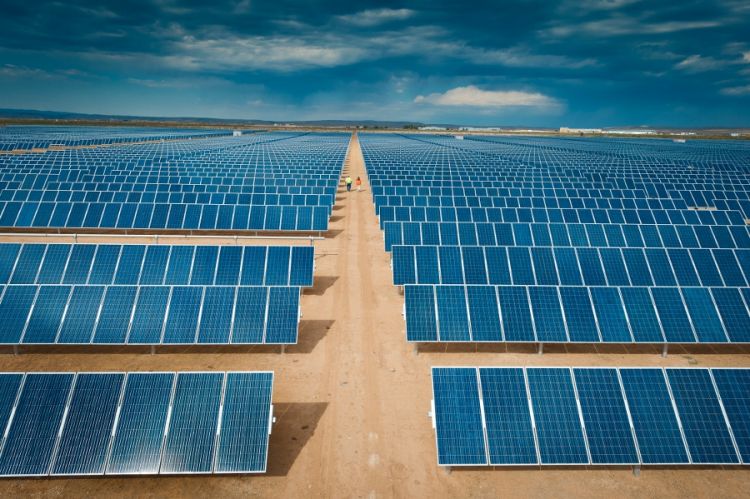
THE WORLD
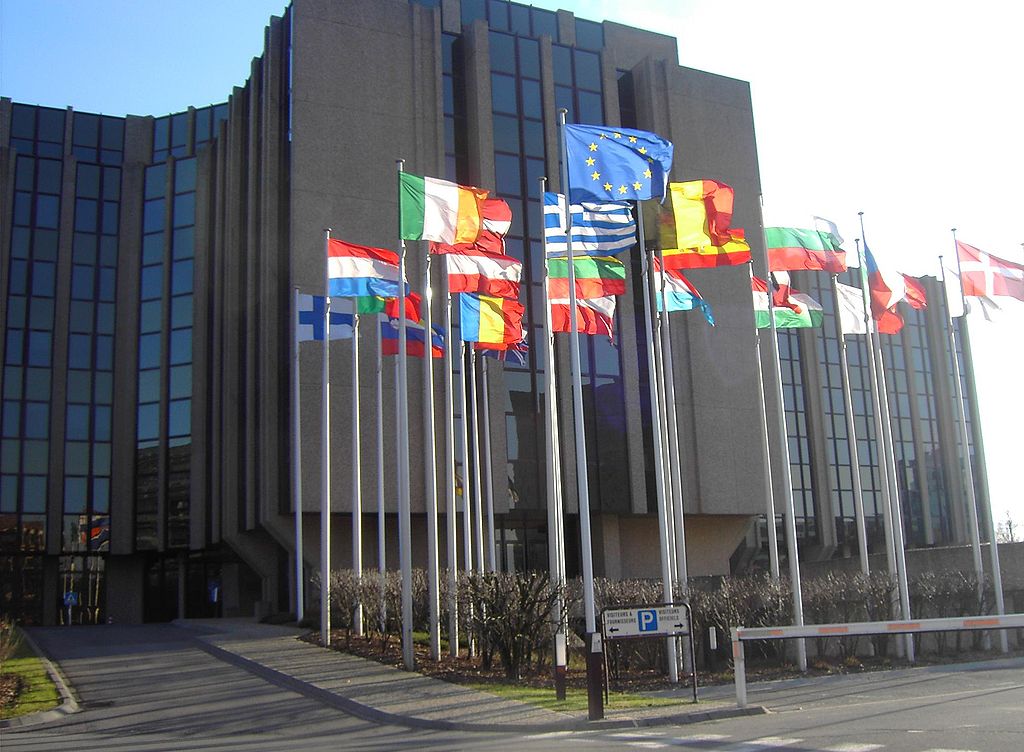 * What if the energy transition and the Green Plan lacked raw materials?
* What if the energy transition and the Green Plan lacked raw materials?
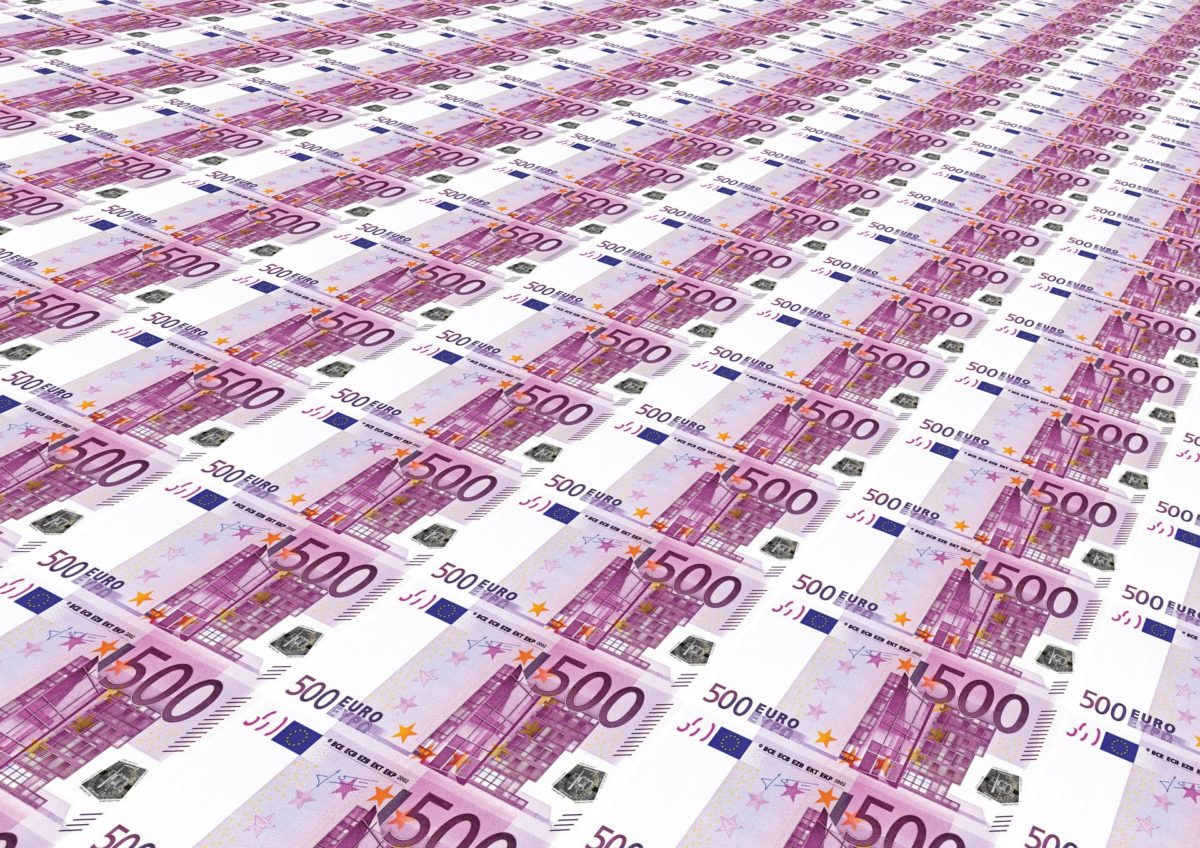 * Wholesale electricity prices in Europe would only rise in 2022
* Wholesale electricity prices in Europe would only rise in 2022
Other interesting articles :
FRANCE![]() * Can EDF make a lot of money in small-scale RE?
* Can EDF make a lot of money in small-scale RE?
 * Situation of collective self-consumption in France
* Situation of collective self-consumption in France
.
THE SUBSIDIARY
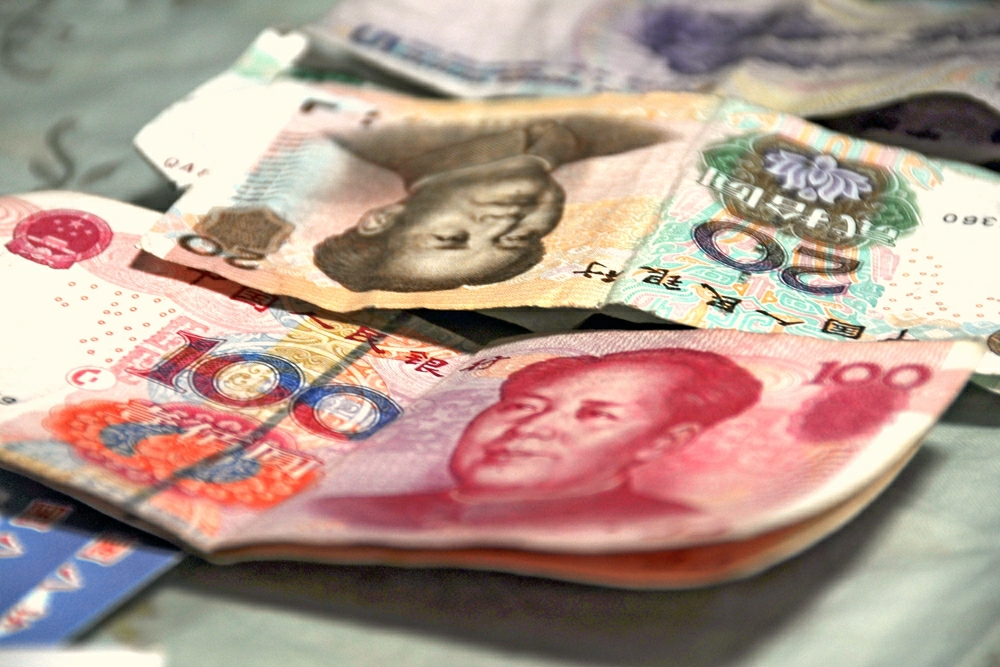 * The coronavirus is slowing down the demand for panels. Prices are tending to fall.
* The coronavirus is slowing down the demand for panels. Prices are tending to fall. * The pandemic improves the atmosphere and increases solar production.
* The pandemic improves the atmosphere and increases solar production.
.
THE WORLD
 * The Netherlands could host between 100 GW and 125 GW by 2050.
* The Netherlands could host between 100 GW and 125 GW by 2050.
.
THE PRODUCTS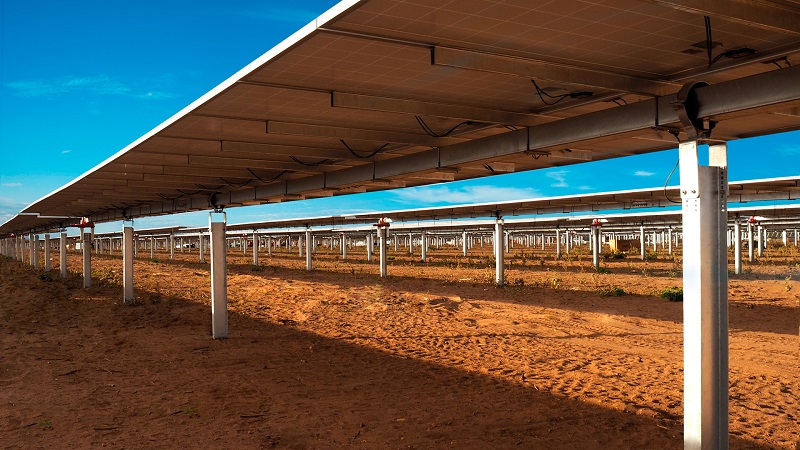 * The solar tracker market in 2019
* The solar tracker market in 2019
.
THE COMPANIES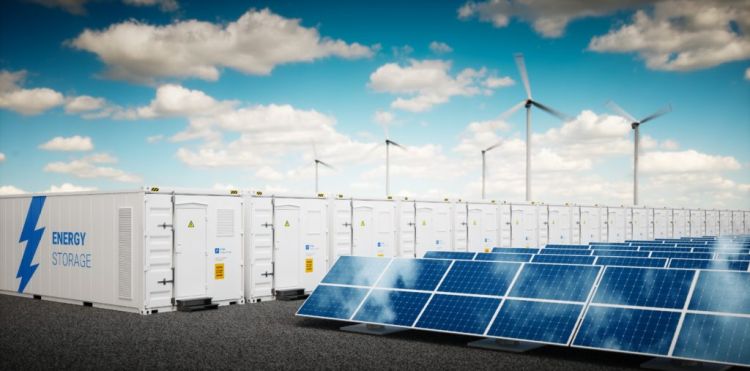 * The value of PV assets will decrease at the end of the year if the price of energy has fallen.
* The value of PV assets will decrease at the end of the year if the price of energy has fallen.
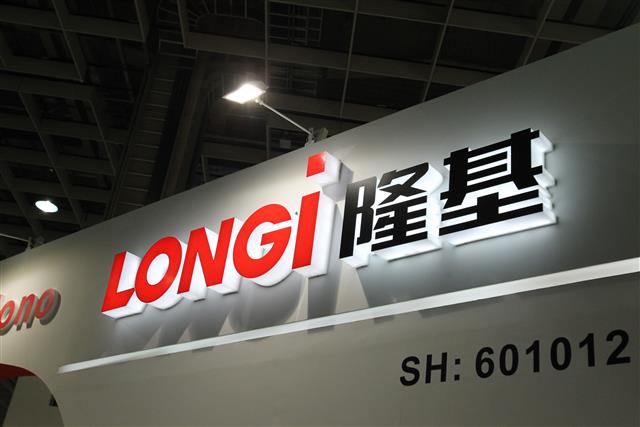 * LONGi presented its 2019 accounts
* LONGi presented its 2019 accounts
.
MISCELLANEOUS * Google wants to optimise its production of renewable energy
* Google wants to optimise its production of renewable energy
THE DEVELOPMENT OF THESESECURITIES
.
FRANCE
 * Two decrees published: on the EPP and on the SNBC
* Two decrees published: on the EPP and on the SNBC
Two decrees were published in the Official Journal on 21 April, the one relating to the multiannual energy programming (EPP) and the one relating to the national carbon budgets and the national low-carbon strategy (SNBC).
The EPP decree sets the priorities for action for the period 2019-2028. It sets the objective for photovoltaic energy at 20.1 GWp in 2023 and between 35.1 GWC and 44.0 GWC by 2028. To achieve this, two ground-based photovoltaic tenders of 1 GWp per year are planned and three tenders per year for 300 MWp per period.
This decree provides for the installation of 1 to 10 Power to Gas power demonstrators for hydrogen in 2023 and 10 to 100 demonstrators by 2028. In addition, an objective in terms of the rate of decarbonated hydrogen in industrial hydrogen is set at 10% in 2023 and 20% to 40% in 2028.
The text also takes into account clean transport, with targets for electric vehicles (660,000 in 2023 and 3 million in 2028), rechargeable hybrids (500.000 in 2023 and 1.8 million in 2028), electric or hybrid commercial vehicles (170,000 in 2023 and 500,000 in 2028) and low-emission heavy-duty vehicles (21,000 and 65,000 by 2023 and 2028 respectively).
The decree also specifies the "global" objectives, i.e. that of reducing the consumption of fossil primary energy compared to 2012: for natural gas, - 10% in 2023 and - 22% in 2028; for oil, - 19% in 2023 and - 34% in 2028; and for coal, - 66% in 2023 and - 80% in 2028. The reduction target for final energy consumption compared to 2012 is -7.5% in 2023 and -16.5% in 2028.
.
The NBCS
The second decree "defines the carbon budget that constitutes France's greenhouse gas emission ceilings target for 2019-2023, 2024-28 and 2029-33. It adopts the revised draft national low-carbon strategy, which contains the guidelines for the implementation of the greenhouse gas mitigation policy. »
"The carbon budget for the periods 2019-2023, 2024-2028 and 2029-2033 is set at 422, 359 and 300 Mt CO2eq per year respectively, excluding emissionsandremovals associated with land use and forestry. »
PV Magazine of April 23rd
Editor's note This catalogue of objectives is nice, but it has a fundamental initial ambiguity. For some, they are guidelines that may change according to circumstances; for others, they are objectives to be achieved that we will not fail to remind the public authorities of at all times!
This is what France is all about and the way it acts: the public authorities are not constrained by anything since they decide sovereignly. Their word only commits those who listen to them. The latter expect everything from the State and are therefore obliged to remind the decision-makers of what they have announced. It does not occur to them that they can free themselves from it; that they are authorised to act to modify the present situation to direct it in the direction they wish. They do not dare to launch initiatives that could be misinterpreted by the public authorities! Hence the need to enshrine in law what they do not believe they can achieve on their own!
 * Towards a revision of the French energy system?
* Towards a revision of the French energy system?
In a "point of view", France Stratégie, a body attached to the French Prime Minister, calls for "re-examining the robustness of the French energy systems".France Stratégie, a body attached to the French Prime Minister, calls for a "re-examination of the robustness of the French and European electricity production, transmission and distribution systems," in the light of the drop in activity on demand.
On the one hand, renewable energy producers (wind and solar) are not affected by the crisis since the quantities of electricity produced are not sufficient to meet the demand.On the one hand, renewable energy producers (wind and solar) are not affected by the crisis since the quantities of electricity produced depend on wind power and sunshine, and the purchase price is guaranteed on almost all the volumes produced.
The weather conditions in March and April were particularly favourable for the production of renewable energy.
On the other hand, the fall in activity, particularly in the industrial and tertiary sectors, has led to a sharp drop in consumption, increasing the share of "non controllable" means of production in the overall supply, including solar and wind power, but also certain nuclear power plants (about half of the park) and even certain non-flexible gas installations.The share of these non controllable means of production may even exceed the demand. In this case, the priority of injecting renewable energies into the network leads the managers of this network to shut down conventional power plants. The shutdown of certain plants deprives the use of "interruptible" means.
Demand has been so low at times, particularly at weekends, that it has generated particularly long negative price episodes. As a result, several nuclear and conventional power plants have had to be shut down in Europe. As a result, gas-fired power plants (where the marginal cost of operation is usually the highest) are the first to be shut down, although they are often the most flexible.
Above all, the fall in wholesale market prices will mechanically increase the cost of public support for renewable energies with a guaranteed purchase price on almost all the volumes produced. With a feed-in tariff of 70 € / MWh (an average value for wind power) and a market price of 55 € / MWh, the cost of support is 15 € / MWh. With a market price of 20 € / MWh, this cost increases to 50 € / MWh. This will lead to an imbalance in the Energy Transition earmarked account attached to the State budget and fed by the domestic tax on the consumption of energy products (TICPE), whose revenue is also falling sharply: the latest estimates showed a loss of €1.5 billion, due to the fall in consumption of petroleum products following the containment measures. It should be remembered that, for 2020, support for renewable electrical energy sources accounts for 65% of public energy service charges, i.e. around €5.2 billion according to the CRE. »
"Thus, the fall in economic activity caused by the containment measures could have created room for manoeuvre facilitating the management of the electricity production, transmission and distribution system. This is not the case. Several effects of the crisis weaken this system rather than consolidate it". The crisis is increasing the relative share of intermittent renewable energies in electricity production, which increases the volatility of the volumes produced (and thus of the electricity consumption).The crisis increases the relative share of intermittent renewable energies in electricity production, which increases the volatility of the volumes produced (and consequently of market prices) and requires the presence of more flexible means on the network, while these are shut down.
Moreover, "for reasons related to the rules of containment or supply difficulties, the crisis is leading to the postponement of a certain number of maintenance or fuel loading works that were to take place between now and next winter on various means of production (thermal power stations - nuclear or fossil - but also renewable energies). This postponement is likely to affect the availability of controllable power plants at a time when the cold weather could lead to increased demand on them".
The fall in wholesale prices resulting from the drop in volumes will weigh on EDF's accounts; the beneficiaries of the Arenh mechanism (access to renewable energy sources) will be able to benefit from the new system.The fall in wholesale prices resulting from the drop in volumes will weigh on EDF's accounts; the beneficiaries of the Arenh mechanism (regulated access to historical nuclear energy) will not be able to take advantage of the fall in prices, since they have most often opted for a fixed price. They will also be able to face competition from operators who have not done so under unfavourable conditions. »
PV Magazine of April 24th
Editor's note The pandemic had the merit of showing that the public authorities were far from having foreseen everything. The drop in demand, the obligation to inject RE and the confinement had the effect of disorganising the fine organisation of the French electricity system, both physical and financial.
As a result, the advantages of RE producers should be cut back, for example on the obligation to inject
This article indicates that changes will take place in the energy landscape. Otherwise, it would not have been leaked!
+
Tecsol presented this text in a different way : https://tecsol.blogs.com/mon_weblog/2020/04/france-strat%C3%A9gie-sest-pench%C3%A9e-sur-les-impacts-de-la-crise-du-covid-19-sur-le-syst%C3%A8me-%C3%A9lectrique-euro.html

 * Can EDF make a lot of money in small-scale RE?
* Can EDF make a lot of money in small-scale RE?
EDF is betting heavily on residential and commercial distributed energy in the United States. The electrician first invested in large wind and solar power plants. Now, the subsidiary EDF Renewables is trying to reproduce this success on small contracts by multiplying the sites of solar installations, storage, micro-grids and chargers for electric vehicles. It acquired GroSolar, a specialist in small ground-based systems, and then EnterSolar, one of the leading American installers for commercial and industrial customers. More recently, it bought PowerFlex Systems, which builds charging systems for intelligent electric vehicles.
The current health crisis could provide an opportunity to buy other companies. Other energy companies (Shell, Enel, ...) have bought or are buying up businesses in the United States. The trend is thus towards the emergence of new electricity companies. However, distributed energy is not an easy activity. Many companies are going bankrupt. EDF also experienced setbacks during a contract with PG&E which then went bankrupt.
The American RE market has developed in two forms, large parks and small distributed systems (residential and commercial). Few companies have been able to continue their activity on both markets. EDF did so, but this orientation was overshadowed by the attention paid to large installations. EDF has a strong conviction. It believes that commercial and industrial installations will grow as companies increasingly turn to traditional electricity companies to buy clean energy and energy services directly.
EDF is also interested in vehicle chargers because these vehicles are highly developed in certain car parks of Californian technology companies. It's a way to start a commercial relationship
The diversity of EDF's activities in the United States means that any positive development in one market will have repercussions on another. Today, distributed solar energy is a source of profit across the Atlantic. In the midst of a health crisis, municipal services are open and contracting, while private companies are sometimes stopped. From then on, EDF's solar projects finance part of the growth that should take place in other segments, such as storage or electric vehicles, which are at an early stage.
EDF notes that small projects have a much higher internal rate of return than that of a wind or solar power plant. The challenge is to reduce overheads while developing a constant flow of small projects.
GreenTech Media of 22 April
NDLR EDF can carry out this strategy in the United States, but not in France where the conditions are not met. This presentation indicates the strategy that will be carried out in the different countries to establish the energy transition: to extend its capacity to intervene in related trades, currently not mature but capable of developing within a few years.
 * Situation of collective self-consumption in France
* Situation of collective self-consumption in France
In France, collective self-consumption operations are gradually increasing. At the end of 2018, there were 6 operations and 44 participants. One year later, there were 21 operations with 370 participants. At the end of March 2020, 30 collective self-consumption operations are operational and involve nearly 500 participants, according to Enedis data.
At the beginning of April, Enedis had received 31 projects for consideration, half of which were due to come on stream before the summer (if the projects are not delayed because of the coronavirus).
For the time being, collective self-consumption operations are being set up by municipalities using their own means of production to supply municipal buildings, or by HLM organisations with their tenants.
Full Sun of April 21st
.
.
THE SUBSIDIARY
Numerous recently announced PERC P mono production capacity expansions will be put on hold until 2021, and then probably cancelled at a later date. Manufacturers' announcements in the first two months of 2020 will be reconsidered in light of reduced demand in 2020.
Assessment of Coronavirus-related delivery losses
It is difficult to be precise at present. It is always the case at the beginning of the year, but particularly in the beginning of 2020. It is impossible for any research organisation to try to determine how the coronavirus will affect several end markets, on products and on rooftop or ground-based installations. One cannot rely on the top ten or twenty manufacturers, nor can one extrapolate from the leading manufacturer.
Two points can be made: on the one hand, the amount of production from China and its factory extensions in South-East Asia, and on the other, the amount "authorised" by the Chinese authorities.
Before the pandemic, world demand was expected to be exceptional in Europe, the United States, the world ... An installation volume of 150 GW was envisaged against 120 to 130 GW in 2019, including 40 GW for China and 110 GW for the rest of the world. The industry was preparing to have a production capacity of 170 GW, which would have allowed a 10 to 20% drop in prices during the year.
Demand is mainly seen in countries that import 100 % of their panels. If demand in these countries collapses, local production is not affected. Construction sites can be pushed back to 2021. This does not do business for China which has been struggling to gain market share.
Global demand could be cut in half, to 55 GW. Production should therefore be around 100 GW, and China would then absorb half of world demand. If this happens, prices will collapse along the entire c-Si value chain and will not recover by 2021. Many Chinese panel manufacturers will go out of business. It should be noted that there have been some tremors in China over the last two years in the production of silicon, ingots, wafers and cells.
Reducing costs
The other obvious operational change that will take place this year will be cost reduction, also known as silver retention.
The only past example of a fall in global production occurred in March/April 2012. At the time, the industry was dominated by the production of p-multi standard cells (Al-BSF). There was no effort to introduce new c-Si technologies into the industry. What happened then in the industry was several years of "saving money" and reducing costs in the manufacturing plants. By the time this was exhausted, LONGi had created the new monosilicon landscape that ushered in P-PERC mono as the dominant technology today.
At the time, the slowdown in the sector did not cause a purchase cycle for existing technologies. The R&D departments of the companies were poorly developed. Today, this is no longer the case. In 2020, there is a frenzy of change that has left panel buyers confused about what to do.
In early 2020, N-type was just beginning to be prioritised by industry leaders (JinkoSolar, Canadian Solar, Trina Solar for example) at a time when many little-known Chinese companies were announcing plans for multi-GW N-type (especially heterojunction).
The emergence of type N
As a result, the downturn in the industry in 2020 is very different from 2012, as technological change can now, and most likely will, occur. This could indeed be the first round of technology purchases focused on slowing down the sector, with Type N eventually moving to multi-GW production scales.

The graph distinguishes between the most advanced n-type architectures (heterojunction and retro-contact) and all other types, similar to the P-type such as n-PERT, TOPCon, ...
Between 2013 and 2016, type N production has been relatively stable, with limited investment from market leaders. The growth trajectory started in 2017, initially driven by n-PERT agreements from LG Electronics. The main increase in production is planned for 2020 and is largely due to the new N-type lines from JinkoSolar.
If the production of SunPower and Panasonic is eliminated, the growth trajectory of the N type is clear. The forecast for 2020 is largely based on the plans put in place at the end of 2019 and further capacity increases known in the first quarter of 2020.

The real impact of a technology purchasing cycle initiated by the top ten panel suppliers in China may not be seen from a production perspective until 2021. However, the simple fact that more of these major players are increasing their new Type N capacity from 500 MW to 1 GW is probably the best leading indicator that Type N could be the real next technology after single P PERC.
It is necessary to follow the evolution of the half-dozen companies that will really engage in the ramp-up of Type N production,
PV Tech refers to its recently published PV Manufacturing & Technology Quarterly report.
https://www.pv-tech.org/news/n-type-expansions-to-benefit-from-2020-downturn-driven-pv
PV Tech of April 23rd written by Finlay Colville
 * The coronavirus is slowing down the demand for panels. Prices are tending to fall.
* The coronavirus is slowing down the demand for panels. Prices are tending to fall.
The coronavirus is slowing down the demand for panels. Prices are tending to fall. Small manufacturers face an uncertain future.
Now that the United States is affected by the pandemic, the demand for new solar equipment has slowed down. Price cuts are now continuing in China, Europe and Australia, and now in the US market. This comes on top of supply disruptions and uncertain demand around the world.
Some manufacturers are slowing their production rate. SunPower announced this week that its production lines have been shut down for the next few weeks. Other manufacturers remain in business, such as Jinko Solar, which is maintaining its 2020 targets. First Solar is continuing production, but indicated at the end of March that its forecasts are likely to change.
Worldwide, the supply of panels exceeds demand. At the moment, it is difficult to predict how the situation will develop. Global demand is being disrupted to a large extent. As a result, excess manufacturing capacity is unlikely to be absorbed soon.
Before the pandemic, the demand for panels in the United States was estimated at 18 GW in 2020. The supply comes from South East Asia where production capacity reaches 25 GW. This is almost double the American needs, which have now been reduced to 16 GW.
Europe, Australia and Japan recorded a 5 to 7% drop in panel prices in the first quarter of 2020. The United States could see a 10% drop this year, based on current estimates.
These declines could significantly affect smaller manufacturers. Lower market prices will stimulate developers despite the constraints of the pandemic. Large, well-capitalised manufacturers such as Jinko and First Solar could benefit. Installers who focus on an industry segment such as residential or commercial, such as SunPower, may face more pressure.
In a downturn, when buyers are thinking about what panels they are buying, they need to think about who will survive this pandemic. The panels have a 25 to 30 year warranty. Developers will give preference to manufacturers with good financial standing. Buying panels from a company that goes bankrupt creates problems later on. Small manufacturers therefore have an uncertain future, such as CSUN in China or Seraphim in the USA. Large manufacturers are sometimes heavily indebted, such as Jinko Solar, which has a debt of $1.9bn at the end of December.
GreenTech Media of 22 April
Editor's note The article is written by an American by American standards and not Chinese. Over there, the support of financial institutions is unfailing when it is not combined with the support of local governments. This means that small Chinese manufacturers will get the support they want. It also means that the willingness to significantly increase production capacity, combined with lower demand, will lead to a very serious crisis among producers. The fall in prices will be well beyond the figures announced above. The situation of the manufacturers will boil down to selling at any price, even at a large loss, in order to hold on. Any restriction of production would condemn those who would take the decision to do so. This situation will occur in May and June, on condition that the pandemic appears to have been brought under control...
 * Pandemic improves the atmosphere and increases solar production
* Pandemic improves the atmosphere and increases solar production
The health crisis in Europe is reducing air pollution as vehicles, planes and factories are virtually shut down. This creates clean air, clear skies and increased solar production in Europe. Spain, Germany and the UK all broke solar production records this spring.
It is usual for production to increase in the spring thanks to recent installations. This year, the effect is accentuated by the clear atmosphere. The British government has detected a 25% drop in nitrogen dioxide in the air. This drop, up to 50%, is even more pronounced in the most polluted areas of the country. Solar production peaked at 9.7 GW with a rather low average temperature (14°C), below the usual average due to pollution. This allowed Great Britain to live without coal for a fortnight.
In Germany, the same phenomenon occurred with a solar production that reached a record of 32 GW.
Spain also broke its production record with 6.3 GW, after the country commissioned 4.7 GW last year. The recent commissioning of the 500 MW plant will be reflected in the April figures.
Pollution blocks some of the solar radiation and makes the panels dirtier. Aerosols such as sulphur dioxide also cause more cloud cover, which reduces the efficiency of the PV systems. Last summer, a study on air pollution in China showed its impact on solar production. The loss of production was estimated at between 11% and 15% between 1960 and 2015. If pollution had been reduced to 1960 levels, an additional US$1.9 billion of electricity could have been generated in 2016.
GreenTech Media of 22 April
.
.
THE WORLD * What if the energy transition and the Green Plan lacked raw materials?
* What if the energy transition and the Green Plan lacked raw materials?
The European Commission has commissioned a study on the raw material needs to achieve the energy transition with two key dates, 2030 and 2050. The answer is clear: the deployment of solar energy in the EU could be jeopardised by a shortage of raw materials.such as germanium, tellurium, gallium, indium, selenium, silicon and glass, and the need to import the majority of raw materials.
To develop their scenarios, the researchers compiled the objectives of the various states, assessed the production capacities required, examined the different levels of demand in the rest of the world, and the raw material requirements that this implies. They distributed these needs according to the different RE sectors and raw materials. They tried to predict what technological improvements would reduce the need for raw materials.
The result was three scenarios for the demand for clean energy raw materials in the European Union:
1°) The most optimistic outlook for solar would imply a net decrease in the demand for raw materials, as technological advances would offset more widespread deployment.
2°) The average demand scenario foresees an increase in the demand for materials of between three and eight times.
3°) The high demand scenario paints a different picture. In the latter model, demand for silver would quadruple and demand for silicon by a factor of 12 by 2050. More worrying would be the foreseeable 40-fold increase in demand for cadmium, gallium, indium, selenium and tellurium. Demand for germanium would exceed all measures, with an increase of 86 times the volume imported in 2018.
Building materials such as concrete, steel and aluminium could increase eightfold by 2030 and 30fold by 2050 in the high demand scenario. The PV industry currently consumes 60.7 tonnes of concrete per megawatt of installed production capacity. Demand for steel was estimated at 67.9 T / MW in 2018; plastic 8.6 tonnes; glass 46.4 T / MW; aluminium 7.5 T / MW; and copper 4.6 tonnes per megawatt in 2018. For these materials, only minor reductions in requirements were projected by the authors of the report. In 2050, the study projects that demand for these materials could be 80%, 90% or 100% of 2018 levels, depending on the three demand scenarios.
Innovation could reduce the demand for materials. For example, between 2004 and 2018, the need for silicon to produce one watt of panel power was divided by four. This could be divided by a third or a half by 2028.
In a high-demand scenario, germanium, tellurium, gallium, selenium, silicon, glass and indium could be in short supply with some of these elements exceeding current world supply levels.
Thus, the EU's energy transition could be threatened by weaknesses in the supply chain,
https://www.pv-magazine.com/2020/04/23/the-raw-materials-needed-for-the-european-green-deal/
PV Magazine of April 23rd
Editor's note First of all, the Commission should be congratulated for trying to map out the needs and resources for raw materials before proposing a plan that might be unrealistic.
Only the results of the study leave readers perplexed: Either we are not able to have the raw materials to achieve the energy transition and avoid pushing in that direction, or we go ahead knowing that there will be a shortage and an interruption in the energy transition at some point in time. So the sooner we have installed RE generators, the more autonomous we will be, hoping that by then there will be major technological innovations that will make it possible to get rid of a certain number of materials that must be in short supply.
If we look back a few years ago, lithium batteries must have lacked this material because there were only two or three producing countries and the treatment of salars was extremely expensive. The problem was solved with new producing countries and a decrease in the need for lithium per battery. This will hold until the number of electric vehicles becomes widespread, which could then cause the shortage to reappear.
 * Wholesale electricity prices in Europe would not rise again until 2022
* Wholesale electricity prices in Europe would not rise again until 2022
According to the British Aurora Energy Research, after their fall, wholesale electricity prices in Europe may only start to rise again from 2022 onwards. They would not fully recover before 2025, according to the study's moderate scenario. This would be the consequence of the global economic recession.
Renewable energy production might not be affected when protected by government tariffs. However, market sales will be significantly affected.
New renewable energy projects could be the hardest hit, according to Aurora. While subsidized projects will see revenues partially or fully protected by the government despite lower market prices, the expected decrease in developer revenues will impact existing renewable systems and is expected to delay new programs.
Approximately 34 GW of renewable developments carried out on a commercial basis could be at risk in the seven countries in the study.
The drop in demand could also create challenges for European electricity grid operators. They will have to balance the grid, while the proportion of renewables will be higher than usual. Already in the UK, solar power has broken a production record. The rise in renewable energy production led to a significant drop in electricity prices earlier this month.
Gigawatts of solar power are being installed across Europe. Increased fluctuations in electricity prices could delay commercial solar power projects.
PV Tech of 23 April
Editor's note This study agrees in many respects with the "point of view" of France Stratégie (Towards a revision of the French energy system).
During a crisis, one always has the impression that the worst will persist.

According to the German market research company EuPD Research, Germany has an installation potential of 1,000 GW by 2050, whereas the ceiling for investment aid is currently limited to 52 GW.
In a survey of 1,000 homeowners, 5% of them have already decided to buy PV systems, and 15% of respondents said they were close to a final purchase decision. This means that they are currently obtaining offers or seeking advice. Their motivation is to reduce their electricity costs, while contributing to environmental protection. They want to benefit from the state-guaranteed feed-in tariff.
The legal ceiling of 52 GW could be reached in July. Once reached, no new photovoltaic systems up to 750 kW will be subsidised. There could be a strong impact on private owners if the ceiling is not abolished.
The small system segment (up to 10 kW) is a significant market driver in Germany. Last year it grew by 45% with 581 MW of new systems deployed (out of nearly 4 GW installed).
Owners fear a sharp decline in the deployment of new commercial and industrial PV systems due to the 52 GW cap. However, commercial investors are the main driver of photovoltaic demand in Germany.
The energy transition in the electricity sector is underway, EuPD said. The next step will be to decarbonise the heating and transport sectors. This will require large amounts of additional electricity from photovoltaics and wind power. It assumes a final energy consumption of 1,600 TWh in 2050.
"Assuming that offshore and onshore wind power and bioenergy continue to grow at a slow pace, these two sources could cover about 40% of demand, or about 666 TWh in 2050. Photovoltaics should provide 1,000 terawatt hours", according to the BNE. This would require an installed photovoltaic capacity of 1 TWp by the middle of the century.
More short- and long-term storage will be needed to absorb peak loads in the grid and allow for delayed use of solar energy, especially in winter. In the medium term, power generation from renewable energies can also be converted directly into hydrogen in electrolysers.
The BNE has examined the possible acceptance problems that could result from a massive expansion of ground-based photovoltaic systems. Approximately 50,000 square kilometres of space would be required for 500 GW of solar parks. However, Germany currently uses about 24,000 square kilometres to grow energy crops.
According to the BNE, almost 10,000 square kilometres are used for wheat and rapeseed, from which biofuels are produced. If these areas were covered with solar PV instead of energy crops, 30 times more energy could be generated.
"The future energy system would thus occupy less land than today and increase biodiversity significantly and reliably.It is economically superior to the previous fossil fuel system and improves security of supply through flexibility on the production and consumption side," the association said.
According to BNE calculations, the cost of electricity produced by large photovoltaic systems will be around €25 / MWh combined with battery storage from €30 / MWh to €40 / MWh. At the same time, there will be significant cost reductions in the electrolysers that produce green hydrogen. Its production costs could thus fall to around €1.25 per kilogram by 2030 and thus compete with hydrogen produced from fossil fuels.
The new energy industry wants wind and sun to be the fuels of this energy transition.
PV Magazine of 24 April
 * The Netherlands could host between 100 GW and 125 GW by 2050.
* The Netherlands could host between 100 GW and 125 GW by 2050.
The Netherlands could host between 100 GW and 125 GW by 2050, according to the Dutch association of national and regional electricity and gas grid operators. The outcome will depend on the authority in charge of solar installations: municipalities, regional governments, central government, the European Union or the international market.
The figures put forward (100 to 125 GW) are higher than those in their 2017 study (84 GW), due to lower panel prices and higher panel yields.
PV Magazine of 22 April
.
.
THE PRODUCTS * The solar tracker market in 2019
* The solar tracker market in 2019
NEXTracker remains the world leader in tracker deliveries, as in 2018. It is followed by Array Technologies, and now by PV Hardware. Together, they account for 80% of global sales, according to Wood Mackenzie. The market would have progressed by 20% between 2018 and 2019.
Sales in the United States accounted for 50% of global tracker deliveries in 2019, with growth of 226% year-on-year. This is the strongest growth recorded in any region. This is largely due to the admission of trackers to the federal tax credit. 35 and 40% of facilities in the United States use this tax credit.
Latin America was the world's second largest market for trackers last year, led by Mexico, Brazil and Chile. Soltec, STI Norland and NEXTracker were the main suppliers of trackers.
Arctech Solar, NEXTracker and Array Technologies were the top three in Asia-Pacific. Australia, the largest market in the region, experienced a 10% contraction in 2019. This is the result of fewer installations by power companies. This trend is expected to continue in 2020. As a result, the Australian tracker market will represent a smaller percentage of the APAC region market.
Most major suppliers shipped 1.5 to 2 times as many trackers last year as in 2018. Globally, the supplier market was slightly less concentrated in 2019 compared to 2018, although the top 10 suppliers still account for 88% of the market and the top three suppliers still account for 80%.
Prices for photovoltaic trackers are not expected to fall significantly as the market grows. This provides an incentive for the best suppliers to diversify into software and services to maintain a competitive advantage.
GreenTech Media of 21 April
Editor's note Wood Mackenzie does not publish the size of the U.S. or global market, or even the market share of the first two.
What is impressive is the concentration of the market. The top three account for 80% of the market. This leaves little room for other manufacturers. Should we imagine that there is a volume premium for each manufacturer, or is there an advantage for American producers?
.
.
THE COMPANIES * The value of PV assets will decrease at the end of the year if the price of energy has fallen.
* The value of PV assets will decrease at the end of the year if the price of energy has fallen.
A European investor in renewable energy, the Renewable Investment Group (TRIG) has warned of the "significant impact" of the pandemic on electricity price forecasts. It has reduced the group's net asset value.
It forecasts a significant 25% drop in prices for the remainder of 2020 and for 2021, mainly due to a collapse in electricity demand associated with a drop in economic activity. It estimates that wholesale electricity prices in the countries in which it holds renewable assets will fall by an annual average of 17% over the following years.
TRIG adds to the concerns of European solar developers. They fear development will be halted without subsidies.
TRIG has a portfolio of wind, solar and battery projects across Europe. It has a combined generation capacity of 1.6 GW. TRIG has fixed revenues, which is advantageous for assets in France and Germany.
The short to medium term collapse in electricity prices implies a reduction in net asset value. TRIG estimates it at around 4% per share.
Volatile electricity prices are having unforeseen effects on renewable energy in all areas, particularly in the Netherlands. This week, the country's renewable energy producers were warned that subsidy payments will be suspended if wholesale prices fall into negative territory for six consecutive hours or more, as happened at the end of March.
PV Tech of 22 April
Editor's note Behind this particular case, there is all the appreciation of companies holding photovoltaic assets. IFRS accounting standards require companies to assess the value of assets at market price every year. The fall in the price of electricity, and the consequent fall in the price of renewable energy assets due to the lower abundance of investors, will lead to asset impairments. This will result in losses in companies owning power plants. Fortunately, this will only occur at the end of the financial year, i.e. 31 December 2020. By that time, the economy could be recovering and demand for electricity could pick up. Until then, all companies that establish periodic net asset values must include this depreciation in the value of their portfolio and therefore publish this decline. The 4% used by TRIG seems reasonable for the time being.
This depreciation of assets is an aspect that should be kept in mind.
 * LONGi presented its 2019 financial statements
* LONGi presented its 2019 financial statements
Last year, the company produced 4,700 billion monosilicon wafers (+ 139% over 2018). It achieved an operating income of $4.6 billion (+49% over 2018). Net income reached $746 million (+106%). (Editor's note: the turnover is not mentioned)
At the end of 2019, the company's production capacity for monocrystalline silicon wafers reached 42 GW. LONGi plans to reach a monocrystalline wafer production capacity of 75 GW in 2020.
In the photovoltaic cell and panel production subsidiary (LONGi Solar), sales reached 7,394 MW, an increase of 23%. Exports of photovoltaic panels reached 4,991 MW, an increase of 154% over 2018, and represent 67% of total sales.
LONGi Solar's production capacity was 14 GW at the end of 2019. It is planned to double this capacity to 30 GW by the end of 2020.
In 2019, orders for panels using M6-format wafers had reached 10 GW.
In thefirst quarter of 2020 :
LONGi's sales reached $1.2 billion compared with $826 million last year. It achieved net profit of $263 million (+205% on 2018 profit which was particularly low). The net margin was 21.8%.
PV Tech of April 24
Editor's note With such growth and profitability, it is logical that the company sees itself through the crisis without any problems, looks forward to a bright future, and plans a huge capacity expansion.
.
.
MISCELLANEOUS * Google wants to optimise its production of renewable energy
* Google wants to optimise its production of renewable energy
Google wants to use the peak hours of renewable energy production by its data processing centres. To achieve this, Google schedules non-urgent IT tasks that are processed at the time of day when wind and solar power is at its peak (so-called load transfer). These changes are made without additional hardware and do not affect the operation of the IT tasks, such as the Google search engine or YouTube videos. It is also possible to move computing tasks between different data centres.

Google is also concerned about grey shading. It represents times of the day when more carbon-intensive energy is present on the network.
The company's aim is to eventually use only renewable energy.
GreenTech Media of 23 April
Editor's note: This looks like an advertisement praising the qualities of Google. At the same time, this makes sense but it seems to be more difficult to achieve than to conceive the concept.
.
.
.




